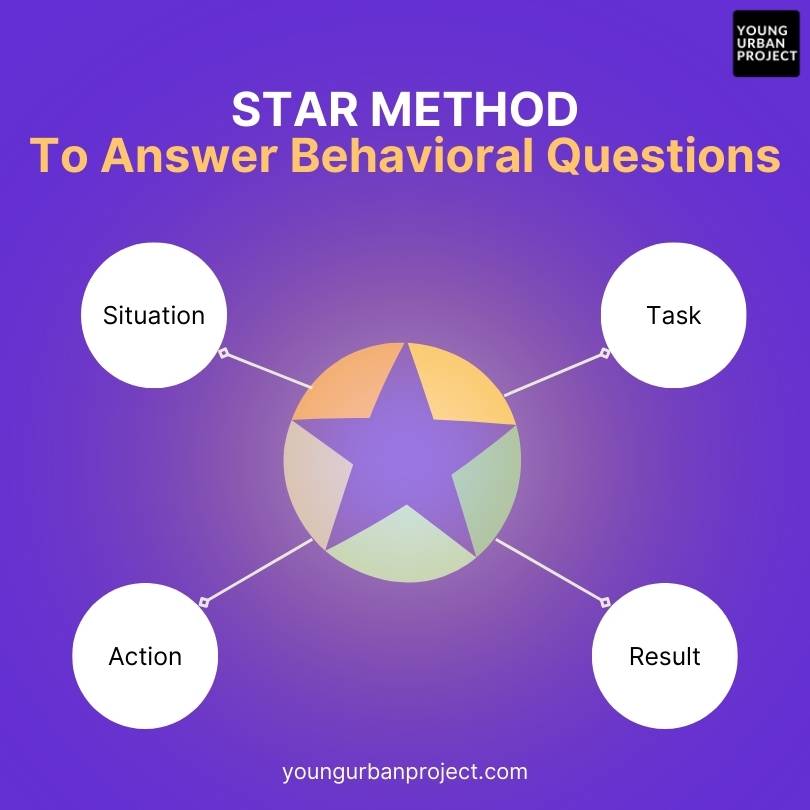Behavioral questions are a staple in job interviews. They help employers gauge how you handle real-life situations. Preparing for these questions is crucial for interview success. When interviewing for Product Management or Product Marketing roles, they help employers gauge how you handle various situations related to product development, team collaboration, and stakeholder management. Mastering these questions can increase your chances of securing a product management role.
In this guide, we’ll explore how to answer behavioral questions effectively and discuss common questions in product management interviews, provide examples, and offer tips for preparation and delivery.
Table of Contents
Understanding Behavioral Questions for Product Managers & Product Marketers
Behavioral questions for PMs and PMMs focus on how you’ve tackled challenges in product development, managed cross-functional teams, and made strategic decisions.
These questions aim to assess your:
- Product Strategy and Vision: How do you define and drive product strategy?
- Leadership and Team Management: Can you lead and motivate cross-functional teams?
- Stakeholder Communication: How do you manage and align stakeholders’ expectations?
- Problem-Solving: How do you address complex problems and make data-driven decisions?
- Adaptability: How well do you adapt to changing priorities and market conditions?
For Example:
An interviewer can ask:
“Describe a time when you had to pivot a product strategy due to market changes.”
The STAR Method: A Proven Approach on how to answer Behavioral questions
The STAR method is essential for structuring your answers to behavioral questions. STAR stands for:

- Situation: Describe the context and background.
- Task: Explain your specific role and responsibilities.
- Action: Detail the actions you took to address the situation.
- Result: Share the outcome of your actions, with quantifiable results if possible.
Using the STAR method helps ensure your responses are clear, concise, and impactful. Let’s see how it works.
Step 1: Situation
The Situation component sets the stage by providing context. In a product management interview, describe relevant product development scenarios, market challenges, or team dynamics.
Example:
“In my previous role as a product manager at Spotify, we were developing a new feature for our flagship product. Midway through the development cycle, we received feedback indicating that the feature was not meeting market needs as initially anticipated.”
Step 2: Task
The Task component highlights your specific responsibilities and challenges. Focus on your role in managing the product, making decisions, or leading the team.
Example:
“My task was to reassess the feature’s direction and lead the team through a pivot to ensure alignment with market demands. I needed to gather insights, prioritize changes, and adjust our development roadmap.”
Step 3: Action
The Action component details the steps you took to address the task. Showcase your decision-making process, leadership, and problem-solving skills.
Example:
“I organized a series of user interviews and analyzed feedback to understand the underlying issues. Based on this, I revised the product requirements and led a cross-functional team meeting to realign on the new objectives. I also communicated the changes to stakeholders and adjusted the project timeline accordingly.”
Step 4: Result
The Result component highlights the outcome of your actions. Quantify the results when possible and show the impact of your efforts.
Example:
“As a result, we successfully pivoted the feature to better meet market needs. The revised feature led to a 25% increase in user engagement and received positive feedback from our beta testers. The project was completed on the new timeline, and our product saw a 15% increase in customer satisfaction.”
Common Behavioral Questions for Product Managers & Product Marketers
Let’s apply the STAR method to some common product management behavioral questions.
1. “Tell me about a time you managed a cross-functional team.”
Situation:
“At my previous company, I was tasked with leading a cross-functional team to launch a new product feature. The team included engineers, designers, and marketers.”
Task:
“My task was to ensure that all team members were aligned on the project goals and that we met our launch deadline.”
Action:
“I held weekly stand-up meetings to track progress and address any roadblocks. I also facilitated communication between team members to ensure that everyone was informed and motivated. I used project management tools to keep everyone on the same page and ensured that we adhered to our project milestones.”
Result:
“The feature was launched on time and received positive feedback from users. The launch contributed to a 30% increase in product adoption within the first quarter.”
Tip: Highlight your leadership and communication skills, focusing on how you managed and motivated a diverse team.
2. “Describe a situation where you had to make a tough prioritization decision.”
Situation:
“In a previous role, we had multiple product enhancements competing for development resources. I needed to decide which features to prioritize for the upcoming release.”
Task:
“My task was to evaluate the potential impact of each enhancement and make a recommendation based on strategic goals and customer needs.”
Action:
“I conducted a thorough analysis of each feature’s potential impact on user experience and business objectives. I also gathered input from stakeholders and users to understand their priorities. Based on this, I recommended prioritizing features that would drive the most value for our core customers and aligned with our long-term strategy.”
Result:
“The prioritization led to the successful release of high-impact features that increased user retention by 20% and aligned with our product vision. Stakeholder feedback was positive, and the decision was well-received by the team.”
Tip: Emphasize your ability to make data-driven decisions and balance competing priorities effectively.
3. “Give an example of a time when you handled a product failure or setback.”
Situation:
“Our team launched a new feature that failed to meet user expectations. Users reported several issues and dissatisfaction with the feature’s performance.”
Task:
“My task was to address the issues, rectify the feature, and regain user trust.”
Action:
“I initiated a thorough analysis to identify the root causes of the failure. I organized a team to work on fixes and improvements, and we communicated openly with users about the steps we were taking. We also provided temporary solutions to mitigate the issues while we worked on a permanent fix.”
Result:
“After implementing the improvements, user satisfaction with the feature increased significantly. We also received positive feedback for our transparency and responsiveness, which helped rebuild trust with our user base.”
Tip: Demonstrate your problem-solving skills, accountability, and ability to handle setbacks constructively.
Also Read: Top Product Marketing Strategies with Examples
4. “Tell me about a time you had to influence stakeholders.”
Situation:
“I was working on a project where key stakeholders were resistant to a proposed product change that I believed was crucial for market success.”
Task:
“My task was to convince the stakeholders of the benefits of the change and gain their support.”
Action:
“I prepared a detailed presentation outlining the market research, user feedback, and projected benefits of the proposed change. I also addressed their concerns and provided data-driven arguments to support my case. I scheduled one-on-one meetings with key stakeholders to address their specific concerns and build consensus.”
Result:
“By presenting a clear, data-driven case, I was able to gain the stakeholders’ support for the change. The product update led to a 40% increase in user engagement and was well-received by the market.”
Tip: Highlight your persuasive skills and ability to use data and communication effectively to influence others.
5. “Describe a time when you had to learn a new skill quickly for a project.”
Situation:
“I was assigned to lead a project involving a new technology that I had little experience with. The project had a tight deadline.”
Task:
“My task was to quickly learn the new technology and apply it to ensure the project’s success.”
Action:
“I immersed myself in learning the new technology by taking online courses and seeking advice from experts. I also set up a knowledge-sharing session with my team to ensure we were all aligned. I applied the new skills to the project and continuously sought feedback to improve our approach.”
Result:
“The project was completed on time, and the new technology successfully integrated into our product. The team appreciated the knowledge sharing, and I became the go-to person for this technology in future projects.”
Tip: Show your willingness to learn, adaptability, and ability to quickly apply new knowledge to achieve project goals.
Also Read: Key Roles & Responsibilities of a Product Marketing Manager
Preparing for Product Interview Behavioral Questions
Effective preparation is key to answering product management behavioral questions confidently. Here are some tips:
- Understand the Job Requirements: Review the job description to identify key skills and experiences required. Adapt your responses to showcase how your past experiences align with these requirements.
- Reflect on Relevant Experiences: Think about your previous roles and projects related to product management. Consider challenges you faced, decisions you made, and the impact of your actions.
- Practice with STAR: Write down several STAR responses to common product management behavioral questions. Practice delivering them aloud to refine your answers.
- Stay Calm and Focused: Behavioral questions can be challenging, but staying calm and taking a moment to think before answering will help you provide more thoughtful responses.
Advanced Strategies on How to Answer Behavioral Questions
Once you’ve mastered the basics of the STAR method, you can enhance your responses with advanced strategies.
1. Aligning Responses with Company Values
Research the company’s values and culture. Adjust your answers to reflect how your experiences align with these aspects. For example, if the company values innovation, emphasize examples where you demonstrated creative problem-solving and innovation.
Example:
“In my previous role, I led a project to develop an innovative feature that improved user engagement by 30%, aligning with your company’s focus on delivering cutting-edge solutions.”
2. Quantifying Impact with Metrics
Whenever possible, use metrics to quantify the results of your actions. Numbers provide concrete evidence of your achievements and make your responses more impactful.
Example:
“Following the product update, we saw a 25% increase in user retention and a 15% boost in revenue. This demonstrated the significant impact of the changes on our business goals.”
3. Demonstrating Continuous Learning and Growth
Highlight how past experiences have contributed to your growth as a product manager. Show how you’ve learned from challenges and applied these lessons to improve your skills and performance.
Example:
“Through managing this project, I learned the importance of agile methodologies in product development. I subsequently attended advanced training, which has improved my efficiency in managing iterative processes and responding to market feedback.”
Following Up After the Interview
After your interview, it’s essential to follow up with a thank-you note. This gesture not only demonstrates professionalism but also reinforces your interest in the role and your appreciation for the opportunity.
Example:
“Thank you for discussing the product manager position with me today. I am excited about the possibility of contributing to your team, especially given my experience in driving product innovation and managing cross-functional teams. I look forward to the opportunity to bring my skills to [Company Name].”
Conclusion
Answering behavioral questions effectively is crucial for product manager or product marketing manager interviews. By using the STAR method, preparing thoroughly, and employing advanced strategies, you can showcase your skills and experiences confidently.
Remember to align your responses with the company’s values, quantify your results, and highlight your growth and learning. With these approaches, you’ll be well-prepared to tackle behavioral questions and make a strong impression on your interviewers.
By mastering these techniques, you not only demonstrate your expertise and problem-solving capabilities but also prove your ability to drive product success and lead teams effectively.

